Uzbekistan Part II - From Nuptials to Nurata
It was one of those moments on a mountainous road when two cars travelling in opposite directions veered out of their lanes to miss pot holes and ended up facing each other at high speed. One of those cars was ours. Thankfully our driver pulled away in time. Inside our vehicle, silence followed while heart rates calmed down. I desperately needed a shot of vodka, I jokingly thought to myself – to one who doesn’t particularly enjoy spirits, let alone the burning taste of Russian firewater. Soon after, Marat pulled the car over to a group of sellers manning their mountainside stalls. This break helped steady our nerves. Vistas of the surrounding mountains and countryside stretched out. There were nuts of all kinds for sale here, hard white balls of dried cheeses, bunches of wild herbs and dried fruits on display in sacks, cardboard boxes and baskets all sitting under a hot sun.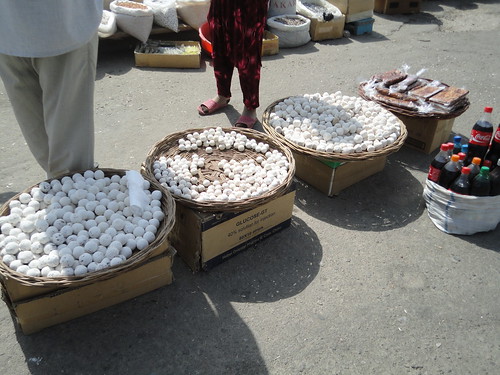 |
| Tangy balls of dried cheese |
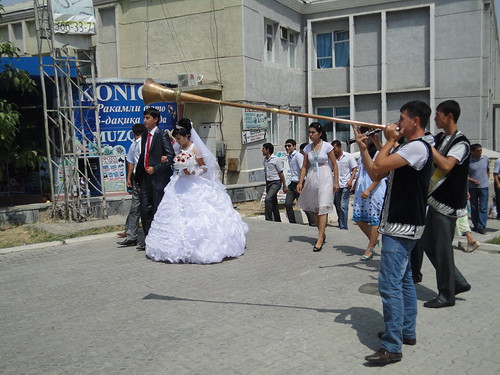
It was Sunday and this was the spot for weddings. As we wandered around and climbed to the top of the Ak-Saray’s tower the sound of music bleated across the square announcing the arrival of bridal couples. Down below we counted more than a dozen bridal parties drifting around the park, many accompanied by musicians blowing on flutes and enormously long-stemmed trumpets whilst drums banged. Each party gathered around Timur’s statue for their Kodak moment, sometimes up to 4 bridal groups spanning the same space for the same group photo. The humidity was high but this didn’t hold back the brides from wearing long veils, voluminous, layered white gowns that resembled puffed-up meringues and thickly applied makeup that stayed on despite the melting heat. Small crowds of tourists, including ourselves, joined in photographing the spectacle.
 |
| Crepe paper, sandpaper or toilet paper? It was all 3. Seriously, I could file my nails with this stuff! |
A lunch stop enroute back to Samarkand was a highlight as the driver pulled up at a restaurant off the main road in a small village down in a green valley. Families were dining outdoors on tapchans under the shade of a thick canopy of forest trees. These are like wooden platforms decorated with colourful fabrics where you sit cross-legged or recline on and they have a small central table for the food. Shashliks (metal skewers of meat, like kebabs) were cooking on the grill, the delicious smell of chargrilled lamb, or most likely mutton, taunting our hungry stomachs. A traditional meal of hot noodle soup of meat and vegetables was followed by salad, then the shashliks served with raw onion (not acrid at all), and finally thick juicy slabs of watermelon. Green tea and black tea as well as the patterned flatbread, nan bread, are customary with meals. So much food, and yet Marat told us this is what is traditionally eaten every day. Hot soup on a hot summer’s day – that takes some getting used to. It was all very delicious, hearty food.
Leaving the Samarkand area we travelled along flat verdant farmlands of cotton, wheat, tobacco and fruit trees, past many small villages, often of mudbrick, and through territorial checkpoints, stalls of piled up watermelons and women in their multicoloured dressses selling nan bread. Donkey carts shared the roads with bicycles, cars and trucks, while goats, sheep and cows grazed in the fields. Heading north away from Samarkand, the landscape changed suddenly. Green fields became parched aridness dotted with flat dry grasses, and always the presence of mountain ranges in the distance.
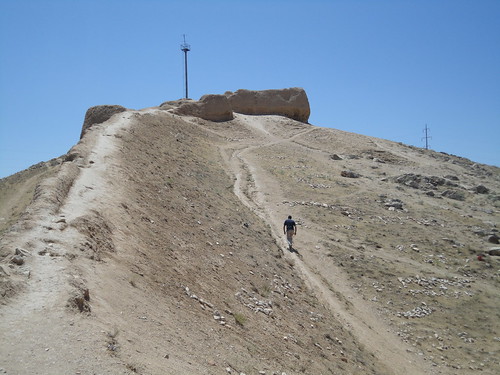 |
| Max making the trek up Great Alexander's fortress |
Back on the road our destination was to a yurt campsite, 60 km away from Nurata following sealed road and then bush tracks, sparse of much sign of life, and where we’d organised to go camel riding and spend the night. The desert camp was in a shallow patch between low sand dunes. These traditional nomadic yurts, similar to Mongolian gers, are round camel hair lined tents. In the daytime summer heat however, it was too unbearable to stay in its dark interior. Sitting inside for several minutes my internal thermostat was ready to blow a gasket – it must surely be around a dangerously high claustrophobic 50+ degrees in here.
The three of us were the only guests at the camp, apart from a couple of staff. The last of the tour buses had left for the season the day before. The female cook ran a kitchen out of a converted railway carriage powered by truck batteries, preparing us an amazing array of cold salad dishes. Bathroom facilities were rudimentary – a hand basin mounted on a metal frame with water hose from a water tank attached (great campsite views in the morning), a pit toilet (lovely under the stars), and an outdoor shower cubicle with cold water (refreshing). What more could we want.
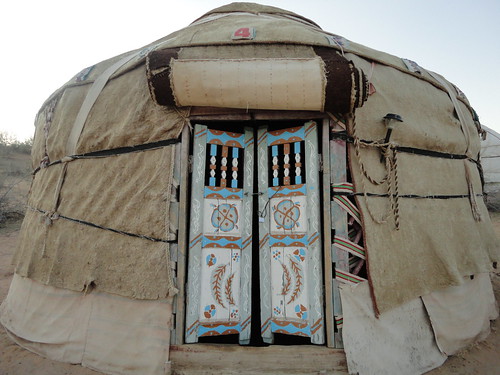 |
| Our room for the night |
 |
| Inventive bathroom facilities |
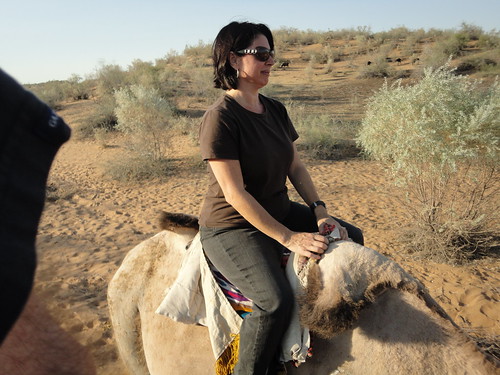 |
| Trying to look cool on top of 2 limp humps and a loose bowel! |
The evening’s entertainment arrived after dinner – a Kazakh man playing a traditional 3-stringed guitar and singing old Uzbek ballads around a campfire. The tunes all sounded the same, we joked, until he learnt we were from Australia and then began inventing verses about kangaroos in his songs. However, the best entertainment was the surprise appearance of little nocturnal prickly-backed animals that waddled out from under the railway carriage kitchen hunting for food scraps. They looked really cute, similar to hedgehogs, but with big pointed ears and pointy faces and obviously used to human contact as I was able to get very close to them. We weren’t able to find out their name – if anyone does, please let me know.
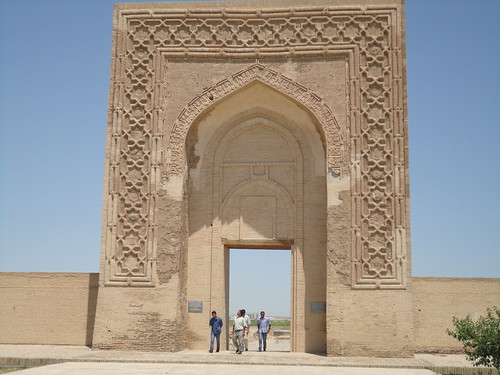 |
| Remains of caravanserai on the Silk Route highway |
In fact, anywhere on the these roads we are never far away from remnants of the silk trading route – an ancient covered well to water the animals, an old mosque – and so on. We now head for the next jewel in the crown of the three ancient cities - Bukhara.




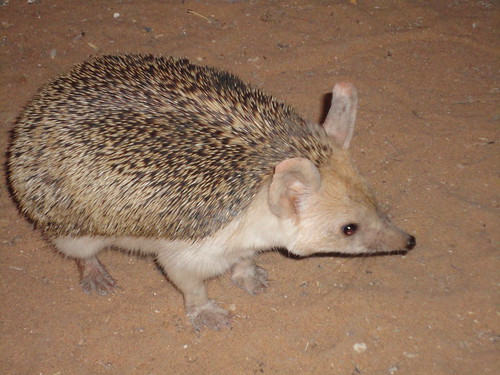
 Hi, I'm Eva - world traveller, cultural explorer and experience seeker. Together with my husband Max, we've been globetrotting for over 20 years.
Hi, I'm Eva - world traveller, cultural explorer and experience seeker. Together with my husband Max, we've been globetrotting for over 20 years.







0 comments: